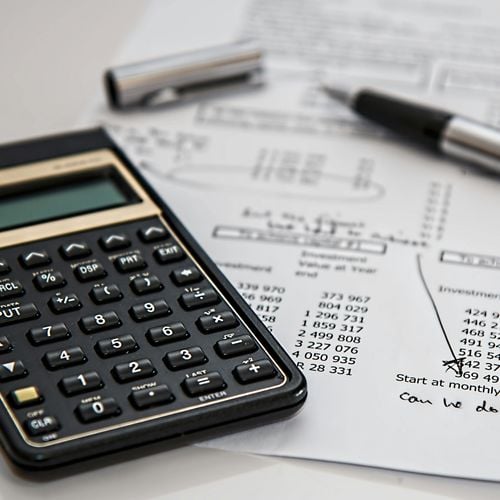From the post-war boom of the 1950s to the cutting-edge smart homes of 2025, the concept of the “ideal home” has transformed dramatically. These changes reflect shifting social values, advancements in technology, and an ever-changing lifestyle. What was once considered a cozy, modest house is now a multifaceted living space designed for convenience, comfort, and efficiency. Let’s take a journey through the decades to see how the ideal home has evolved and how it continues to shape the way we live today. 🌍🏠
1950s: Post-War Prosperity and Family-Centered Living 🛋️👨👩👧👦
-
Architecture & Design: The 1950s marked the rise of suburban living, where homes were typically single-story ranch-style houses or simple two-story designs. These homes symbolized prosperity and were built with functionality in mind. Families sought homes with large backyards and space for growing children.
-
Interior Design: Homes were centered around the family. Living rooms were where families gathered, and kitchens became the heart of the home as more appliances, like refrigerators and washing machines, entered everyday life.
-
Technology: This era saw the introduction of household appliances, including the microwave and washing machine, marking the beginning of convenience in the home.
1960s-1970s: Experimentation and Expansion 🌸🎨
-
Architecture & Design: The mid-century modern style continued, but the 1970s saw a mix of new influences, like split-level homes and eclectic designs. Homes became larger and more spacious as people sought variety in their living environments.
-
Interior Design: This period was all about bold colors and experimental design. Shag carpets, wood paneling, and vibrant patterns became popular, reflecting the era’s love for individuality.
-
Technology: The 1960s introduced color TVs, while the 1970s brought microwaves to the forefront, changing how families prepared meals and making kitchen time more efficient.
1980s: Bigger Homes and High-Tech Kitchens 🍽️🏠
-
Architecture & Design: The 1980s saw the rise of the McMansion, with larger homes and more grandiose designs. Multi-story homes became common, with a shift toward opulent features like columned facades and formal dining rooms.
-
Interior Design: Homes in the ’80s were luxurious with high-end materials like marble and brass. Kitchens became showcases of high-tech appliances and sleek designs, with granite countertops emerging as the material of choice.
-
Technology: This decade saw the introduction of the VCR, home computers, and stereos—ushering in an era of digital entertainment and home technology.
1990s-2000s: Luxury and Digitalization 📱🖥️
-
Architecture & Design: The McMansion era continued, but with an even more polished approach. Homes featured larger living spaces, formal dining areas, and multiple bathrooms. Popular design trends included Mediterranean-style homes with stucco exteriors and tile roofs.
-
Interior Design: Interiors became polished and more minimalist, with a focus on luxury finishes, such as granite countertops, hardwood floors, and custom cabinetry.
-
Technology: The introduction of the internet, DVD players, and flat-screen TVs transformed how families used their homes. Technology began to influence the design of homes, making them more connected and functional.
2010s: Sustainability and Smart Homes 🌿💡
-
Architecture & Design: As environmental concerns grew, homes began to adopt eco-friendly features like solar panels, rainwater harvesting, and energy-efficient windows. The focus shifted to creating homes that were not only comfortable but sustainable.
-
Interior Design: Design trends leaned toward minimalism with open-concept layouts, maximizing natural light and creating multi-functional spaces. There was an increased emphasis on personalization, allowing homes to reflect individual lifestyles.
-
Technology: Smart homes became mainstream, with innovations like smart thermostats, voice-activated assistants, and automated lighting becoming standard features. Home security systems also became more advanced with digital surveillance and remote monitoring.
2020s: Hyper-Connectivity and Multi-Functional Spaces 🧑💻🏋️♀️
-
Architecture & Design: The modern home now serves multiple functions, with spaces for work, fitness, and recreation becoming integral parts of the home. Home offices, gyms, and studio spaces are no longer optional but essential. There’s also a shift toward wellness-focused homes with designs that promote mental and physical health.
-
Interior Design: The home of 2025 features multi-functional spaces, adaptable for work and leisure. The biophilic design movement, which incorporates nature into living spaces, is also on the rise, with plants, natural materials, and sunlight playing central roles.
-
Technology: The Internet of Things (IoT) ensures that homes are fully interconnected. AI-powered devices, smart home assistants, and health tracking systems are integrated into daily life. Home automation continues to evolve, with voice commands and remote-controlled environments becoming the norm.
Conclusion: The Future of the Ideal Home 🏠🚀
From simple suburban houses to technologically advanced, environmentally conscious smart homes, the journey of the ideal home has been shaped by societal needs, technological progress, and evolving lifestyles. The homes of 2025 will be more than just places to live—they will be highly personalized sanctuaries that combine comfort, sustainability, and cutting-edge technology. Whether you’re looking for a luxury home, a green retreat, or a high-tech haven, the ideal home continues to evolve to meet our ever-changing desires.
🔸 Are you drawn to modern smart technology? 🧠💡
🔸 Do you crave eco-friendly design and sustainability? 🌿
🔸 Or perhaps you prefer a more traditional style with a touch of luxury? ✨
Share your thoughts, ideas, or even photos of your favorite home designs in the comments below! Don’t forget to like, share, and tag a friend who’s also on the hunt for their perfect home.
🏡
Partners Realty Group
(865) 789 – 6677
“Finding the Home of Your Dreams, Every Step of the Way.”


